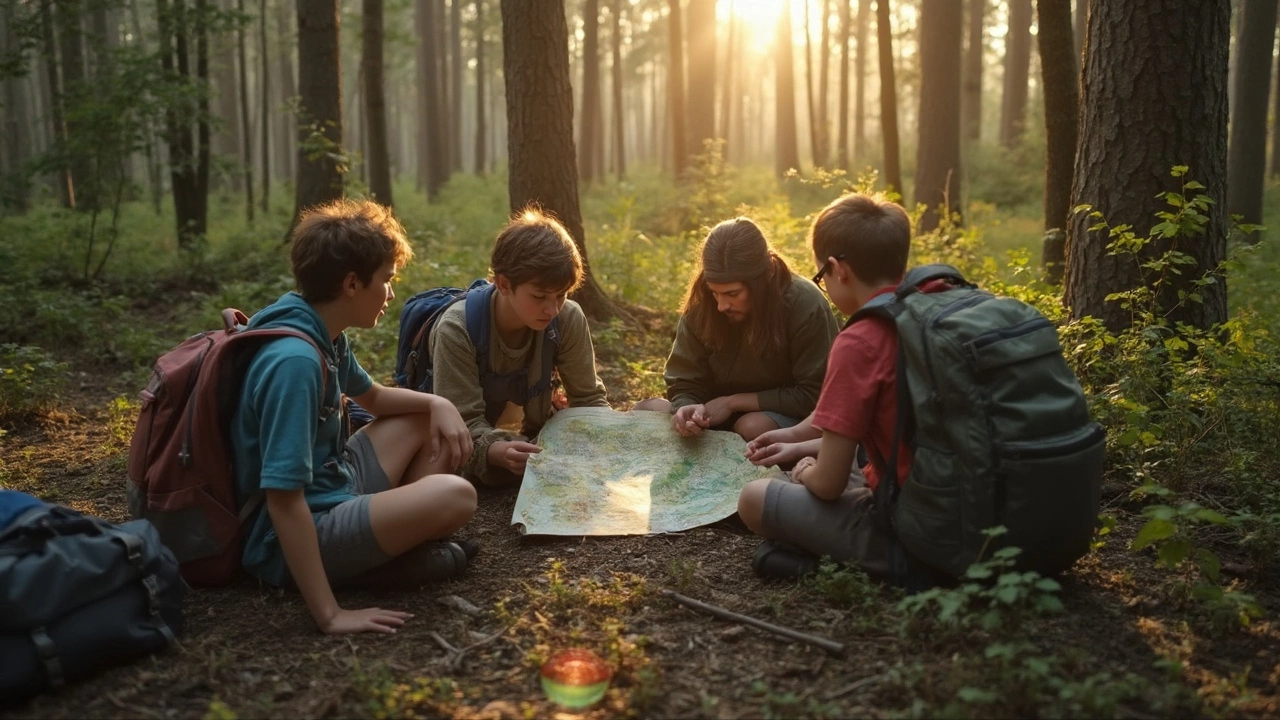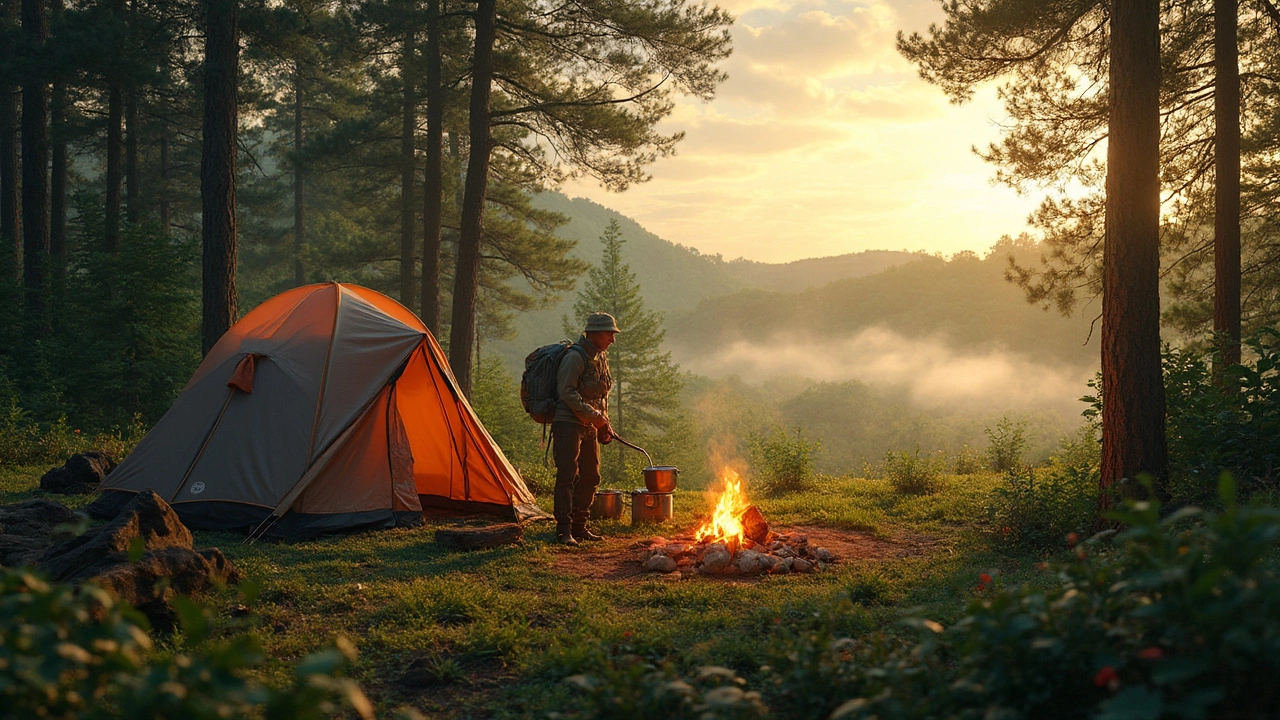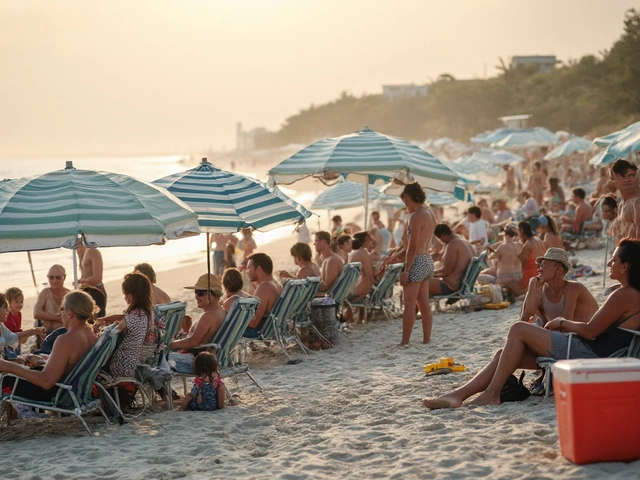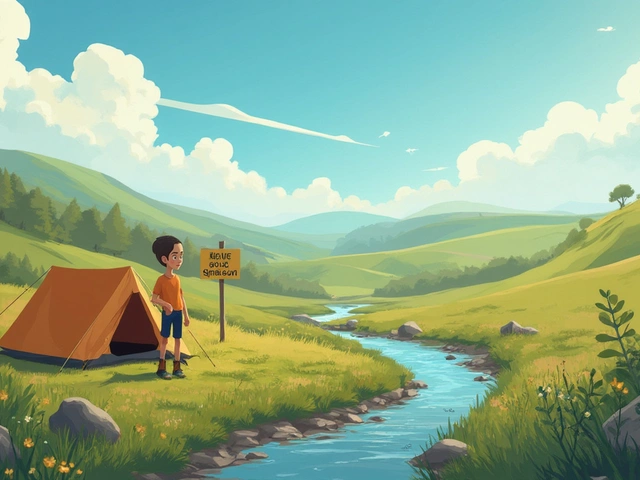So, can you just throw your tent down anywhere in a Wisconsin national forest? If only it were that simple! National forests feel wide open, but there are real rules hiding behind those pine needles. The term you want to know is "dispersed camping"—that's the kind of camping you're talking about. It means you're not in a developed campground, but you're still supposed to follow some basic guidelines.
Dispersed camping is totally allowed in places like Chequamegon-Nicolet National Forest, but it's not a total free-for-all. Certain areas are off-limits, like spots near campgrounds, picnic zones, or right by lakeshores—most forests make you camp at least 100 feet away from water. You also can't set up camp in places marked "closed" or anywhere that a sign tells you not to. Rangers do patrol, and they’re not shy about asking you to pack up if you’re breaking the rules.
- What National Forest Camping Really Allows
- Dispersed Camping: The Basics
- Where You Can't Camp (Even in the Wild)
- Essential Rules to Know
- How to Find a Good Spot
- Smart Tips for a Safe and Easy Trip
What National Forest Camping Really Allows
Let’s clear up what the rules actually say about national forest camping in Wisconsin. You might think these forests are a free-for-all, but the rules are pretty clear—especially in places like the Chequamegon-Nicolet National Forest, which is the big one for the state. Here, "dispersed camping" means you’re allowed to set up camp outside of developed campgrounds, as long as you follow the guidelines.
The official policy is: you can camp almost anywhere in a national forest, except for a few clear exceptions. The Forest Service calls these “dispersed sites.” They’re not marked, you won’t find picnic tables or fire rings, but you also won’t see any reserved signs or fees. Just pick your spot, but make sure it’s not too close to water or a trailhead.
"We welcome dispersed campers, but we ask them to respect the forest, leave no trace, and check for local restrictions before staying." — U.S. Forest Service, Chequamegon-Nicolet
Here are the basics for Wisconsin camping in national forests:
- Camping in one spot is limited to 14 days within a 30-day period, then you need to move at least five miles before setting up again.
- You must stay at least 100 feet from lakes or streams to prevent erosion and keep wildlife happy.
- No camping within designated "closed" areas, research plots, or developed recreation spots.
- Park your vehicle no more than 150 feet from a road to avoid damaging plants and causing ruts.
Want a peek at how much people really use these spots? Check this out:
| Year | Estimated Dispersed Campers (Chequamegon-Nicolet) |
|---|---|
| 2022 | 17,900 |
| 2023 | 20,200 |
That’s thousands of folks each year, which means you’re not alone in your search for a tucked-away patch of forest. Just make sure you’re following the real rules. Rangers have seen everything, and you don’t want a visit from them at midnight because your campfire is a little too close to a lake.
Dispersed Camping: The Basics
If you’ve never tried dispersed camping in a Wisconsin national forest, here’s what you should know: it means camping outside of developed campgrounds. No picnic tables, no fire rings, no toilets. You just pick a spot on public forest land, set up camp, and leave no trace. Simple, but there are some ground rules.
First, check that the area isn’t restricted. The Chequamegon-Nicolet National Forest, for example, allows dispersed camping pretty much everywhere except spots that are clearly marked as off-limits. Don’t camp within 100 feet of any water source, like lakes or rivers; this helps protect water quality and wildlife. Also, keep at least 150 feet away from trails and recreation sites. It’s not just about being out of sight, it’s about respecting the environment and other people’s experience.
- Stay limits: You can’t just move in for the summer. Most of these forests set a limit of 14 days in one place during a 30-day stretch.
- Campfires: Only build fires if there’s no fire ban. Use pre-existing fire rings whenever possible, and make sure you put the fire out cold.
- Leave no trace: Pack out everything—your trash, leftover food, even bits of foil or gum wrappers. Nobody wants to see your camp debris weeks later.
- Human waste: Dig a hole at least 6-8 inches deep and 200 feet from water, trails, and campsites, or pack it out if you’re near sensitive areas.
Here’s a quick look at some Chequamegon-Nicolet figures to give you an idea:
| Rule | Distance/Limit |
|---|---|
| Minimum Distance from Water | 100 feet |
| Minimum Distance from Trails | 150 feet |
| Stay Limit | 14 days per 30-day period |
So no, you can't just plop your tent anywhere. But scattered, wild camping is still super open compared to private land or national parks. The best part? With a little common sense and reading posted rules, you can find your own hidden slice of Wisconsin’s wild forests.
Where You Can't Camp (Even in the Wild)
You might picture yourself wandering deep into the national forest and setting up a tent just anywhere, but it doesn't quite work like that. There are some clear no-go zones when it comes to Wisconsin camping in these forests. Knowing where you can't drop your gear is just as important as knowing where you can.
First, avoid anywhere marked as “no camping.” These signs aren’t suggestions; they’re law. The Chequamegon-Nicolet National Forest, for example, blocks off specific wildlife habitats, historic sites, and “rehab zones” where nature needs a break from boots and tents. Some of these boundaries change by season, especially near eagle nesting zones or after storm damage.
Don’t even think about pitching your tent within 100 feet of a lake, stream, or river. The Forest Service put this rule in place to protect water quality and give wildlife their drinking space. You’ll also need to stay at least ¼ mile away from developed campgrounds, picnic areas, and trailheads. And if you pull your car off the road, don’t park or camp on someone’s private land just because there’s no fence—it could turn awkward fast.
Here’s a super-handy table based on National Forest guidelines in Wisconsin:
| Area | Camping Allowed? | Distance Rule |
|---|---|---|
| Within 100 ft of water | No | Must be over 100 ft away |
| Near developed campground | No | Stay at least 1/4 mile away |
| Private property inside forest | No | Do not enter or camp |
| Closed or signed areas | No | Follow posted rules |
The USDA Forest Service puts it pretty bluntly:
“Camping is not permitted in developed day-use areas or within sight of trailheads, and visitors must respect all posted closures to protect the land.”
Stay alert for those posted rules. Sometimes spots you camped at last year are off-limits this season because of fire risk or endangered species. And don’t trust random websites—double-check with the forest district office before your trip. Breaking these rules can get you a fine and a very embarrassing walk back to your car with a ranger behind you.
- Stick to roads and established pathways when reaching your spot;
- Never try to camp inside a parking lot or pullout;
- Respect boundaries around research and restoration areas—sometimes you’ll spot a small sign and some flagging tape, that’s your clue to move along;
- Check maps: actual forest boundaries can be weird shapes, and you might not be in a national forest at all.

Essential Rules to Know
If you want to sleep out under the stars in a national forest in Wisconsin, you’ve got to stick to a few hard-and-fast rules. The Forest Service is clear on this: they want you to enjoy yourself, but there are boundaries you can’t cross if you want to keep it legal and safe.
First up, the 100-foot rule. You can't set up your tent or park your camper within 100 feet of any lake, river, or stream. This keeps water clean and wildlife happy. You also need to stay at least 150 feet away from roads and trails to avoid blocking anyone passing through.
Check out this quick chart for the basics:
| Rule | Explanation |
|---|---|
| Distance from water | At least 100 feet away |
| Distance from roads/trails | At least 150 feet away |
| Stay limit | Usually 14 consecutive days per site |
| Fire rules | Fires allowed unless county restrictions |
| Pack out trash | Leave no trace required |
Campfires are a no-go if fire danger is high—sometimes there’ll be a burn ban, especially in late summer. Always check the National Forest’s current alerts before heading out. If fires are allowed, only use dead wood found on the ground. Chopping live trees is a quick way to get a ticket.
And don’t forget the “leave no trace” idea. That goes for everything from food scraps to toilet paper. What you bring in, you pack out—no exceptions. It’s not just about the next camper; leftover food can attract bears, skunks, or deer, and nobody wants a raccoon raiding their food at 2 a.m.
Finally, there’s the stay limit. Most Wisconsin camping in national forests has a 14-day rule. That means you can’t just move your tent a few feet and call it a new spot. After 14 days, you need to move at least five air miles to start the clock over again. Rangers really do check, so don’t plan on squatting all summer in the same place.
Stick to these forest rules to keep your trip drama-free. You’ll have plenty of time to explore and enjoy the wild, without worrying about getting kicked out or slapped with a fine.
How to Find a Good Spot
So you’re ready to try dispersed camping in a national forest in Wisconsin, but how do you actually find a spot that works? Let’s break down what’s worked for me and other regular campers out here.
First up, get a good map. US Forest Service maps are the gold standard for Wisconsin camping—Google Maps just won't show the boundaries or closed areas clearly enough. You can grab free PDF maps on the Forest Service website, or pick up a paper one at a ranger station before you head out. That way, you know you’re actually inside the national forest (not accidentally camping on private land).
- Stay off main trails and away from developed campsites. To avoid the crowds and tick all the legal boxes, keep at least 200 feet from roads, trailheads, and officially designated campgrounds.
- Check distance from water. Wisconsin’s forests want you 100 feet or more from lakes and rivers to protect water quality and wildlife. Grab a measuring app or just step it out: about 40 steps is close enough.
- Look for previously used sites. Official advice says to camp where there’s already a flat, clear spot or signs of a fire ring—don’t make a new one if you can help it. You’ll reduce your impact and lower the odds of a ranger telling you to move.
- Mind the weather and mud. Some forest roads turn into mud slogs after rain. Pro tip: call the local Forest Service office (numbers are on their website), or check their alerts online before driving in.
If you’re someone who loves data, here’s a quick look at campsite access in Chequamegon-Nicolet National Forest regions from a 2023 ranger report:
| Area | Popular Dispersed Camp Spots Found | Seasonal Road Closures (average days/year) |
|---|---|---|
| Chequamegon (East) | 42 | 30 |
| Chequamegon (West) | 28 | 21 |
| Nicolet | 37 | 34 |
So if “easy access” is top of your wish list, call ahead to see what’s open. Another thing: cell service can be spotty or gone, so always drop a pin while you still have signal or let a friend know where you’re planning to start.
And just for sanity? Don’t wait till dark to look for a good spot. Aveline and I tried that once—total mistake. With daylight, you can avoid mud pits, thick brush, or, even worse, a ton of mosquitos. Save yourself the grief.
Smart Tips for a Safe and Easy Trip
Heading into a national forest for dispersed camping in Wisconsin can be a rush, but you don’t want a surprise to ruin your trip. Here’s how to keep it smooth, safe, and legal so you actually enjoy time outdoors and not dealing with a ranger or a hungry raccoon.
- Check fire restrictions: Wisconsin’s national forests, including the Chequamegon-Nicolet, sometimes ban campfires when wildfire risk gets high. Look online or call a ranger station before you strike a match—those big "no campfires" signs mean business. Always use an established ring if you find one, and never leave a flame unattended.
- Bears are out there: Black bears do live in Wisconsin, and they go after anything with a scent. Store food, garbage, and toothpaste in a bear-resistant bag or hung from a tree. If you don’t, odds are you’ll get a visit you didn’t want—breakfast with a bear isn’t as fun as it sounds.
- Pack out your trash: National forests don’t have garbage pickup at dispersed sites. If you bring it in—wrappers, cans, toilet paper—you need to pack it out. Leaving a mess is the fastest way to get these spots closed for everyone.
- Plan for no cell service: Most of these camping areas are way off the beaten path. Download maps ahead of time and consider printing a paper one. If you need help, you don’t want to rely on searching for a signal that’s just not coming.
- Poorly marked roads: Forest roads aren’t always marked well. Numbered forest roads on signs might look different from Google Maps. Stay flexible and use local forest maps—they’re usually more accurate than your phone’s GPS.
Here’s a quick look at some common issues campers run into around Wisconsin’s dispersed forest campsites and how frequent they are, based on local ranger observations:
| Problem | Reported Frequency (per season) |
|---|---|
| Improper campfires | 20-30 cases |
| Food left out (bear risk) | 10-15 cases |
| Trash left behind | 25-40 cases |
| Lost due to bad directions | 8-12 cases |
One last thing: check the weather before you go. Storms roll through fast in the northwoods, and a soggy tent is no fun for anyone. Pack dry bags and keep your stuff waterproofed just in case. Trust me, my wife, Aveline, still teases me about the time I forgot and we had to dry socks over the camp stove all night.






